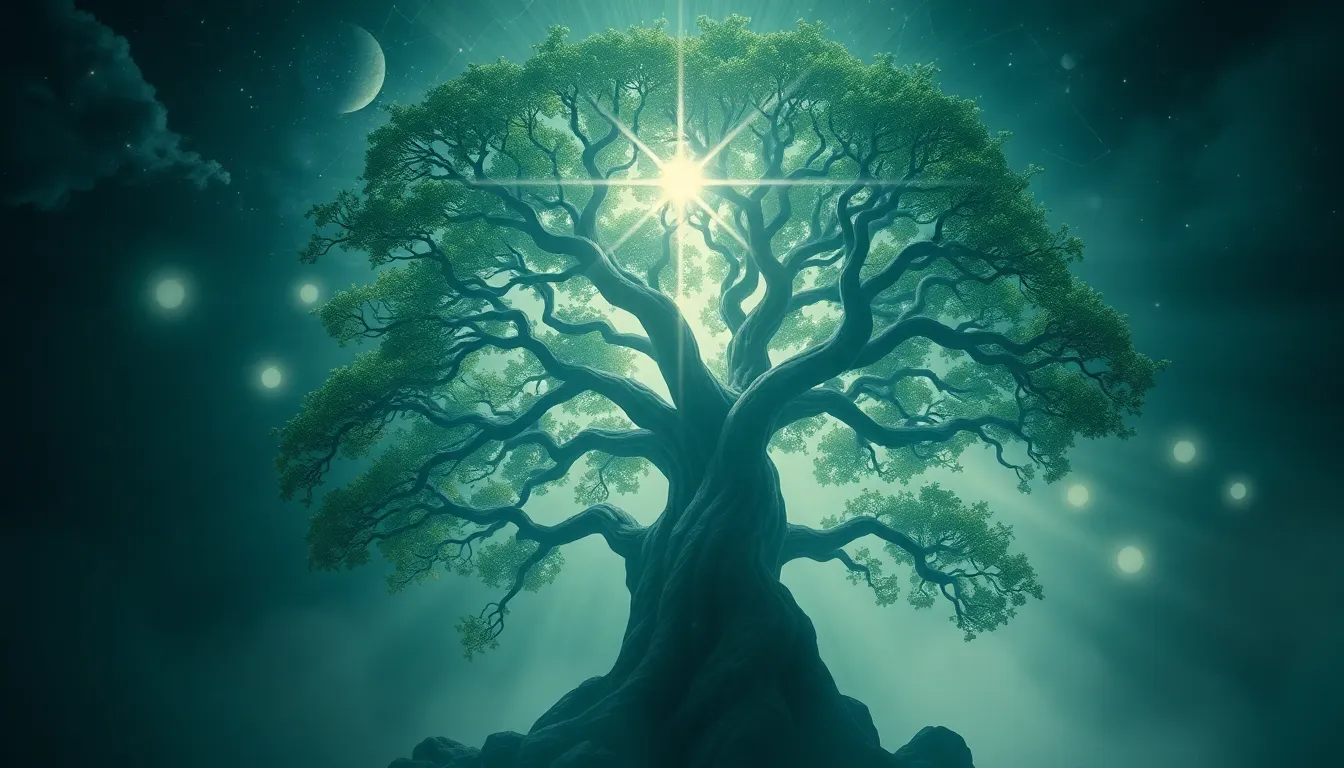The Legend of the Bodhi Tree: Enlightenment Awaits
Introduction to the Bodhi Tree
The Bodhi Tree holds a revered place in Buddhism as the site where Siddhartha Gautama, the historical Buddha, attained enlightenment. This sacred fig tree, known scientifically as Ficus religiosa, symbolizes the profound journey towards spiritual awakening and wisdom. Its significance transcends geographical and cultural boundaries, resonating with millions around the world.
Beyond its spiritual importance, the Bodhi Tree has left an indelible mark on art, literature, and cultural practices, becoming a symbol of peace, meditation, and the quest for deeper understanding.
Historical Background of the Bodhi Tree
The origins of the Bodhi Tree can be traced back to ancient India, specifically to the region of Bodh Gaya in modern-day Bihar. It is said that around 528 BCE, Siddhartha Gautama, a prince who renounced his royal life in search of truth, sat under this very tree to meditate. This quest marked the beginning of his transformation into the Buddha, or “the Awakened One.”
As the story unfolds, Siddhartha faced numerous challenges and temptations during his meditation under the Bodhi Tree. However, through unwavering determination and deep introspection, he ultimately reached enlightenment, gaining profound insights into the nature of suffering, existence, and the path to liberation.
The Symbolism of the Bodhi Tree
The Bodhi Tree is rich in symbolism, representing wisdom, knowledge, and the interconnectedness of all life. In Buddhist tradition, it stands as a powerful emblem of enlightenment, embodying the journey from ignorance to awareness.
Across various cultures, the Bodhi Tree has been embraced as a symbol of:
- Spiritual growth and transformation
- The quest for inner peace
- Connection to nature and the cosmos
The Life of Siddhartha Gautama Under the Bodhi Tree
Siddhartha Gautama’s time under the Bodhi Tree is a poignant chapter in Buddhist history. For 49 days, he engaged in deep meditation, confronting his inner demons and the existential questions that plagued humanity. The struggle was intense, with Mara, the embodiment of desire and illusion, attempting to distract him from his path.
It was during this period of ultimate focus that Siddhartha experienced a profound moment of clarity. He realized the Four Noble Truths, which outline the essence of Buddhist teachings:
- The truth of suffering (Dukkha)
- The truth of the cause of suffering (Samudaya)
- The truth of the end of suffering (Nirodha)
- The truth of the path that leads to the end of suffering (Magga)
This moment of enlightenment not only transformed Siddhartha but also laid the foundation for the teachings that would later shape Buddhism as a major world religion.
The Spread of the Bodhi Tree Legend
The story of the Bodhi Tree and Siddhartha’s enlightenment played a pivotal role in the spread of Buddhism beyond India. As the teachings of the Buddha reached various regions, the Bodhi Tree became a central motif in the religious practices of many cultures.
In different Buddhist traditions, the Bodhi Tree is celebrated through various rituals and festivals, symbolizing the universal quest for enlightenment.
The Bodhi Tree in Art and Literature
The Bodhi Tree has been a timeless subject in Buddhist art, often depicted in sculptures, paintings, and murals. Its imagery is intertwined with representations of the Buddha, emphasizing the connection between nature and spiritual awakening.
In literature, references to the Bodhi Tree can be found in ancient texts and modern writings alike. These works often explore themes of meditation, enlightenment, and the cyclical nature of life, reflecting the tree’s enduring legacy.
Modern-Day Significance of the Bodhi Tree
Today, the Bodhi Tree remains a significant pilgrimage site for Buddhists. Pilgrims from around the world visit Bodh Gaya to pay homage to the tree, which is a direct descendant of the original tree under which the Buddha attained enlightenment.
Contemporary practices associated with the Bodhi Tree include:
- Meditation sessions held beneath the tree’s canopy
- Ritual offerings of flowers, incense, and candles
- Community gatherings for teachings and discussions
Environmental Importance of the Bodhi Tree
Beyond its spiritual significance, the Bodhi Tree also plays an important ecological role. Sacred trees like the Bodhi Tree contribute to biodiversity, provide habitats for various species, and help maintain the balance of the ecosystem.
Conservation efforts are crucial to protect the Bodhi Tree and its species, ensuring that future generations can appreciate its beauty and significance. Initiatives include:
- Restoration of sacred groves
- Awareness campaigns about the importance of preserving sacred trees
- Community involvement in conservation projects
Personal Reflections on Enlightenment and the Bodhi Tree
The legend of the Bodhi Tree inspires countless individuals on their personal journeys toward enlightenment. Its story encourages seekers to explore their inner selves, confront their challenges, and pursue a path of mindfulness and awareness.
Modern interpretations of the Bodhi Tree’s teachings emphasize the importance of:
- Self-reflection and meditation
- Compassion and empathy towards others
- Living in harmony with nature
Conclusion: The Timeless Legacy of the Bodhi Tree
The Bodhi Tree stands as a timeless symbol of enlightenment, wisdom, and spiritual growth. Its legacy has shaped not only the course of Buddhism but also the cultural and spiritual landscapes of societies around the globe.
As we reflect on the teachings associated with the Bodhi Tree, we are reminded of the ongoing pursuit of enlightenment in our lives. In a world that often feels chaotic, the story of Siddhartha under the Bodhi Tree encourages us to pause, meditate, and seek our own paths to understanding and peace.



